10 Best winter drinks.
Beat winter’s cold bite and warm up with these cozy brews.
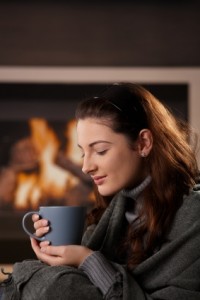 What better way to celebrate the colder, restful months than with a hot beverage? Whether you’re looking to cozy up to the fire with a mug of herbal tea or entertain guests with spiced cider, there are dozens of recipes to choose from. For those special occasions with family and friends, reach for ancient recipes like mead or glogg to toast the season. You can enhance a bottle of wine with rich, earthy spices like cinnamon, cloves, star anise, or licorice root. For a warm punch that pleases a crowd, mix wine with liquors like brandy, Schnapps, Cointreau, Grand Marnier, or Galliano. Then jazz it up with stevia, fennel, basil, or woodruff. Most of the recipes found here are non-alcoholic, but suggest a liquor if you want to add a little “spirit.” Double the recipes for a larger crowd and keep the brews warm on the stove or in a crock pot. Garnish with pretty herbal flowers like chamomile, lavender, pineapple sage, and mint. Or use edible stir sticks like licorice root, chicory, cinnamon, or rosemary bark.
What better way to celebrate the colder, restful months than with a hot beverage? Whether you’re looking to cozy up to the fire with a mug of herbal tea or entertain guests with spiced cider, there are dozens of recipes to choose from. For those special occasions with family and friends, reach for ancient recipes like mead or glogg to toast the season. You can enhance a bottle of wine with rich, earthy spices like cinnamon, cloves, star anise, or licorice root. For a warm punch that pleases a crowd, mix wine with liquors like brandy, Schnapps, Cointreau, Grand Marnier, or Galliano. Then jazz it up with stevia, fennel, basil, or woodruff. Most of the recipes found here are non-alcoholic, but suggest a liquor if you want to add a little “spirit.” Double the recipes for a larger crowd and keep the brews warm on the stove or in a crock pot. Garnish with pretty herbal flowers like chamomile, lavender, pineapple sage, and mint. Or use edible stir sticks like licorice root, chicory, cinnamon, or rosemary bark.
Peppermint Patty.
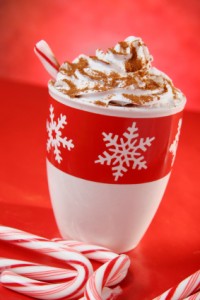 The Aztecs considered chocolate a food of the gods. Montezuma, the Aztec emperor, purportedly indulged in the drink known as cacahuatl more than 50 times a day. Often, chiles, cinnamon, or anise seeds were added to cut the bitterness of this cocoa-based beverage. It wasn’t until Cortez brought the recipe back to Spain that sugar was included. The addition of peppermint ads a refreshing bite and promotes circulation.
The Aztecs considered chocolate a food of the gods. Montezuma, the Aztec emperor, purportedly indulged in the drink known as cacahuatl more than 50 times a day. Often, chiles, cinnamon, or anise seeds were added to cut the bitterness of this cocoa-based beverage. It wasn’t until Cortez brought the recipe back to Spain that sugar was included. The addition of peppermint ads a refreshing bite and promotes circulation.
1 Tbls dried peppermint in a teaball or cheesecloth
1/3 cup hot water
4 cups (1 qt) milk
½ cup sugar
¼ cup cocoa
Suggested liquor: peppermint Schnapps
In a medium saucepan, combine peppermint and water. Simmer over medium heat until mixture comes to a boil; stir for two minutes. Remove peppermint bundle. Add sugar and cocoa, stirring constantly, and continue boiling. Remove from heat, add milk, and stir. Serves 5.
Hot Buttered Cider.
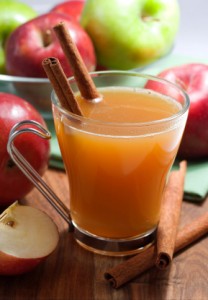 Originally, apple cider was a fermented alcoholic beverage manufactured across the world in countries like Spain, France, and England. Early American settlers began making the drink almost as soon as they arrived and it was quite popular in most households. In pagan cultures, the apple was symbol of immortality and used in many love spells. (For a simple love charm, cut an apple in half, remove the seeds, and share it with the one you adore. Then bury the seeds beneath a full moon for a long and prosperous relationship!)
Originally, apple cider was a fermented alcoholic beverage manufactured across the world in countries like Spain, France, and England. Early American settlers began making the drink almost as soon as they arrived and it was quite popular in most households. In pagan cultures, the apple was symbol of immortality and used in many love spells. (For a simple love charm, cut an apple in half, remove the seeds, and share it with the one you adore. Then bury the seeds beneath a full moon for a long and prosperous relationship!)
1 gallon of apple cider
6 whole allspice berries
Half of a nutmeg seed
3 cinnamon sticks
8 cloves
4 pats of butter
Chamomile flowers
Suggested liquor: spiced rum
To a large pot, add cider and spices Simmer for 20 minutes. Strain into a pretty punch bowl and dot with butter. Garnish with chamomile flowers and serve warm. Serves 12.
Warm Mead.
Thought to have originated in Ireland, mead dates back to ancient times. Brides and grooms toasted with the drink for a month after their weeding. Traditional mead is an ancient fermented beverage made from honey, water, yeast, and spices. The original process is very complicated; this is a simpler, heated version.
1 bottle of Chardonnay
6 springs of sweet woodruff, washed and dried
1 vanilla bean
¼ cup honey
In a medium saucepan, combine wine, woodruff, vanilla, and honey. Gently heat until honey dissolves. Remove woodruff and vanilla and serve in goblets. Serves 4.
Rosemary Coffee.
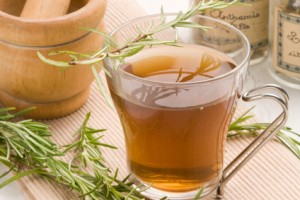 This recipe might seem strange, but if you love rosemary, you’ll enjoy it. And because rosemary stimulates the mind, this caffeinated drink provides a double pick-me-up.
This recipe might seem strange, but if you love rosemary, you’ll enjoy it. And because rosemary stimulates the mind, this caffeinated drink provides a double pick-me-up.
3/4 cup fresh coffee beans or ground coffee
1 sprig rosemary
Water
Grind coffee beans with rosemary sprig and brew. If you don’t have a grinder, chop the sprig first; then add it to the coffee basket before brewing. Serves 10.
Hot Toddy.
It’s great for colds and sore throats. The honey is soothing, while the lemon detoxifies. Add the whiskey to help you sleep.
1 teabag of orange pekoe, green, or black tea
1 cup of water
1 tsp honey
1 wedge of lemon
Suggested liquor: whiskey
Brew tea in water. Remove teabag and pour into a mug and add honey and lemon. Serves 1.
Winter’s Nap Tea.
This tea has all the makings to send you to dreamland. Lavender soothes and relaxes, while valerian and chamomile promote sleepiness.
1 Tbls loose-leaf chamomile tea
1 Tbls dried lavender buds
1 Tbls dried valerian
Water
Add all ingredients to a coffee basket and brew with water. Or heat in a saucepan and strain before serving. Add honey if desired. Serves 6.
After-Dinner Tea.
After a big meal, sipping on this tea can help aid digestion and, as a bonus, it tastes great!
1 licorice root, grated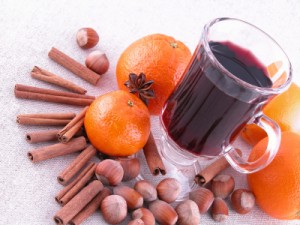
1 star anise
1 Tbls dried orange peel
Small handful anise seeds
Water
Muddle all ingredients together, and place in a tea ball or muslin bag. Gently heat in a medium saucepan filled with water. Remove herbs and spice and pour the liquid into mugs. Serves 2.
Drink to Your Health.
During the long, chilly winter months, our bodies need all the help they can get to fight infection. Colds, viruses, and the flu lurk at the door and a simple handshake can lay one out for weeks. To build up the immune system and stave off bugs that run rampant in winter, try incorporating herbs like rosemary, sage, and lemon balm to your morning tea or coffee. All three of these herbs promote longevity and aid in strengthening the body’s defenses. Add them directly to the basket of your coffee pot for full infusion. Remember to gently crush the herbs in your hands first to release all of their essential oils. If you’re lucky enough to have a coffee grinder, that works even better. Simply add the sprigs or dried leaves to the beans and grind away. Then dress the drink as you normally would.
Don’t forget to consume fresh juices for more immunity-building in the darker months. Reach for 100-percent juice varieties of blueberry, orange, pomegranate, and goji, which may ward off everything from common cold to cancer. Juices are also a great option for flavoring tea, coffee, and punch. For instance, you might add a shot of noni juice to coffee every morning for an antioxidant boost. Noni fruit is derived from trees found across the Polynesian islands and shows promise in fighting fatigue and combating aging.
Swedish Glögg.
A mulled wine that originated in the Scandinavian countries, glogg is enjoyed around the holidays and includes warm spices, nuts, and dried fruit. While many recipes call for a sweet wine like port or even sherry, you may find that the drier varieties better complement these ingredients. You can substitute the brandy for a fruity Schnapps like peach.
1 whole orange
Handful of cloves
1 bottle dry red wine
1 cub blackberry brandy
6 cinnamon sticks
1 handful raisins
1 handful slivered almonds
Wash the orange and pierce it with the cloves. Add all ingredients to a large pot. Gently simmer until warm. Do not strain. Pour into a crock pot to keep warm. Serve in mugs. Serves 6.
N’Orleans-style Latte.
Chicory has been used for centuries as a coffee substitute. Its earthy flavor adds a rich, smokey taste to the hot beverage.
¼ cup coffee beans, or ground coffee
1 chicory root
Milk
Stevia powder
Grind coffee beans with chicory root, or grate root and add to the coffee basket. Brew with water. Add milk and stevia to taste. Serves 10.
Morning Power Tonic.
There has been much chatter in the new lately regarding “power fruits.” Pomegranate, blueberry, goji, and acai berries are said to do everything from boost immunity to combat chronic illnesses. Packed with antioxidants, vitamins, phytochemicals, and anthocyanins, these fruits are the new wave of healthy eating. But age-old lemon balm here is also known to promote longevity. In A Modern Herbal, author Mrs. M. Grieve claims that John Hussey of Sydenham, who lived to the age of 116, drank lemon balm tea daily for 50 years!
1 cup purified water
2 Tbls dried lemon balm
¼ cub cranberry juice
¼ cup pomegranate juice
¼ cup blueberry juice
¼ cup acai juice
¼ cup goji juice
Add lemon balm to a teaball and gently simmer in water for 10 minutes. Remove lemon balm and add juices, simmering for 5 more minutes. Enjoy at the start of your day for an energy boost. Serves 2.
By: Barbara Annino.
Natural Remedies. Honey.
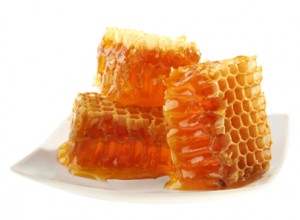 The name of this familiar and time-tested household remedy comes from ancient Hebrew and means “enchant.” Long used as a culinary sweetener, honey is valued for its many healing properties as well. Treatment with honey is referred to as apitherapy and includes replenishing energy, enhancing physical stamina and strengthening those weakened by illness or stress. Honey can also help calm the mind and promote rejuvenating sleep. In addiction, honey relieves indigestion and is used to treat cardiovascular disease and respiratory complaints. Finally, a thin coat of honey can be applied to the skin to disinfect and heal minor skin wounds and chapped lips.
The name of this familiar and time-tested household remedy comes from ancient Hebrew and means “enchant.” Long used as a culinary sweetener, honey is valued for its many healing properties as well. Treatment with honey is referred to as apitherapy and includes replenishing energy, enhancing physical stamina and strengthening those weakened by illness or stress. Honey can also help calm the mind and promote rejuvenating sleep. In addiction, honey relieves indigestion and is used to treat cardiovascular disease and respiratory complaints. Finally, a thin coat of honey can be applied to the skin to disinfect and heal minor skin wounds and chapped lips.
BEES FILTER OUT ENVIRONMENTAL TOXINS.Honey contains only slight traces of residues from industrial emissions, car exhaust and agricultural chemicals because bees act as a biological filter: they die if they come into contact with toxins and thus do not bring pollutants into the hive.
Therapeutic Effect: Honey helps restore energy, has a general calming effect and helps to dissolve mucus. Applied externally to the skin, it disinfects and heals minor wounds.
Components: The principle constituents of honey are the simple sugars fructose and glucose. Other ingredients include water, pollen, organic acids, enzymes and various proteins.
Honey and fitness: Honey provides a healthful pick-me-up. The glucose and fructose in honey have been predigested by the bees that produced it. These simple sugars are quickly and easily absorbed in the human digestive tract, and they have an overall soothing effect. Honey may be a healthy treat, but take care when using it as a sweetener: Just 1 tbsp. of honey has 64 calories, compared to 46 calories in 1tbsp of granulated sugar.
Shopping tip: Many kinds of honey are available. The consistency, fragrance and taste depend on the types of flowers from which bees collect nectar. Look for honey that has been produced by beekeepers who do not feed their bees refined sugars or use harmful pesticides.
Take Care!
Don’t give unpasteurized honey to infants. It contains a type of bacteria that, though harmless to older children and adults, can be very dangerous to those of younger than a year.
Used for the treatment of indigestion, coughs and colds, insomnia, headaches, general weakness and skin wounds.
Applications.
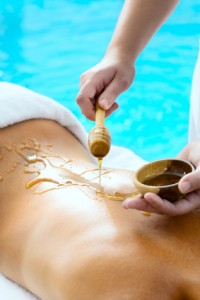 Relaxing honey bath.
Relaxing honey bath.
Put 2 oz. of honey in a glass with 5 drops of lavender oil. If the honey is too thick, heat it by placing the glass in warm water. Add 1 or 2 tbsp. of the honey-lavender mixture to you bathwater to help you relax and combat insomnia.
Honey as a dressing for wounds.
Applied externally, honey is useful for healing minor cuts and abrasions by drawing excess water form the tissues and reducing swelling. In addition, honey contains a germ-killing substance called inhibine, which helps prevent infections. Spread the honey directly on the wound and cover with a sterile bandage.
Help for hay fever.
Honey contains grains of pollen that, over time, may have a desensitizing effect, making it useful for the relief of allergies. Hay fever sufferers are advised to eat honey that has been harvested locally.
For relief of asthma, bronchitis and other respiratory ailments.
Honey is an outstanding household remedy for asthma and can be used in combination with various medicinal herbs. For relief of coughs and wheezing associated with bronchitis, whooping cough or other minor respiratory ailments, mix 1 tsp. of finely chopped fresh thyme in a little honey. Take the mixture orally as needed to soothe inflamed lungs and airways.
Stay healthy through cold winter’s days.
